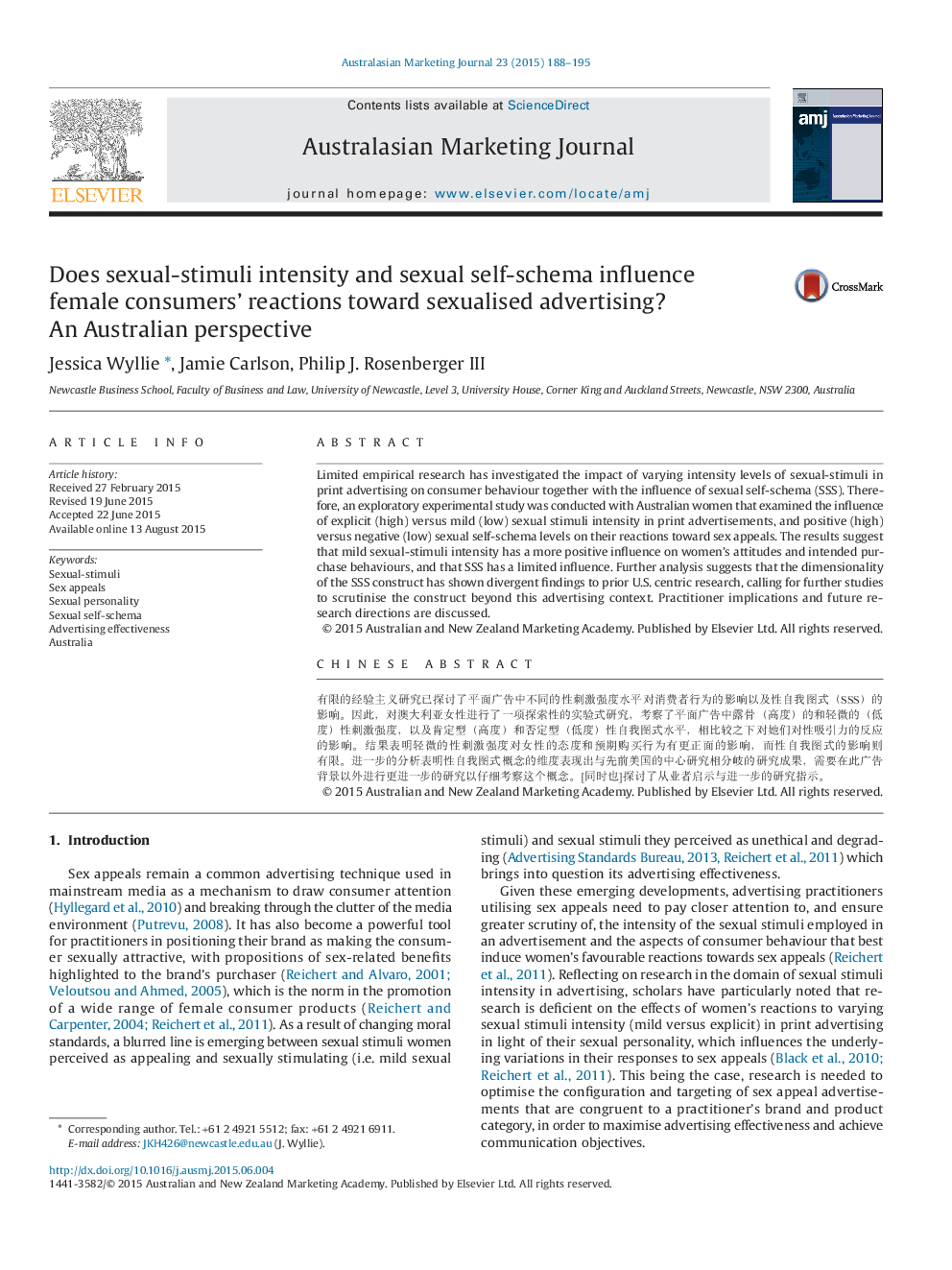| Article ID | Journal | Published Year | Pages | File Type |
|---|---|---|---|---|
| 1026922 | Australasian Marketing Journal (AMJ) | 2015 | 8 Pages |
•The role of sexual-stimuli intensity and sexual self-schema on Australian female consumers' perception of sex in advertising.•Mild sexual-stimuli intensity in advertising is more effective at influencing attitudinal and behavioural responses.•Issues exist with the relevance of the sexual self-schema construct as a forecasting tool beyond the U.S. context.
Limited empirical research has investigated the impact of varying intensity levels of sexual-stimuli in print advertising on consumer behaviour together with the influence of sexual self-schema (SSS). Therefore, an exploratory experimental study was conducted with Australian women that examined the influence of explicit (high) versus mild (low) sexual stimuli intensity in print advertisements, and positive (high) versus negative (low) sexual self-schema levels on their reactions toward sex appeals. The results suggest that mild sexual-stimuli intensity has a more positive influence on women's attitudes and intended purchase behaviours, and that SSS has a limited influence. Further analysis suggests that the dimensionality of the SSS construct has shown divergent findings to prior U.S. centric research, calling for further studies to scrutinise the construct beyond this advertising context. Practitioner implications and future research directions are discussed.
Chinese abstract有限的经验主义研究已探讨了平面广告中不同的性刺激强度水平对消费者行为的影响以及性自我图式(SSS)的影响。因此,对澳大利亚女性进行了一项探索性的实验式研究,考察了平面广告中露骨(高度)的和轻微的(低度)性刺激强度,以及肯定型(高度)和否定型(低度)性自我图式水平,相比较之下对她们对性吸引力的反应的影响。结果表明轻微的性刺激强度对女性的态度和预期购买行为有更正面的影响,而性自我图式的影响则有限。进一步的分析表明性自我图式概念的维度表现出与先前美国的中心研究相分岐的研究成果,需要在此广告背景以外进行更进一步的研究以仔细考察这个概念。[同时也]探讨了从业者启示与进一步的研究指示。
